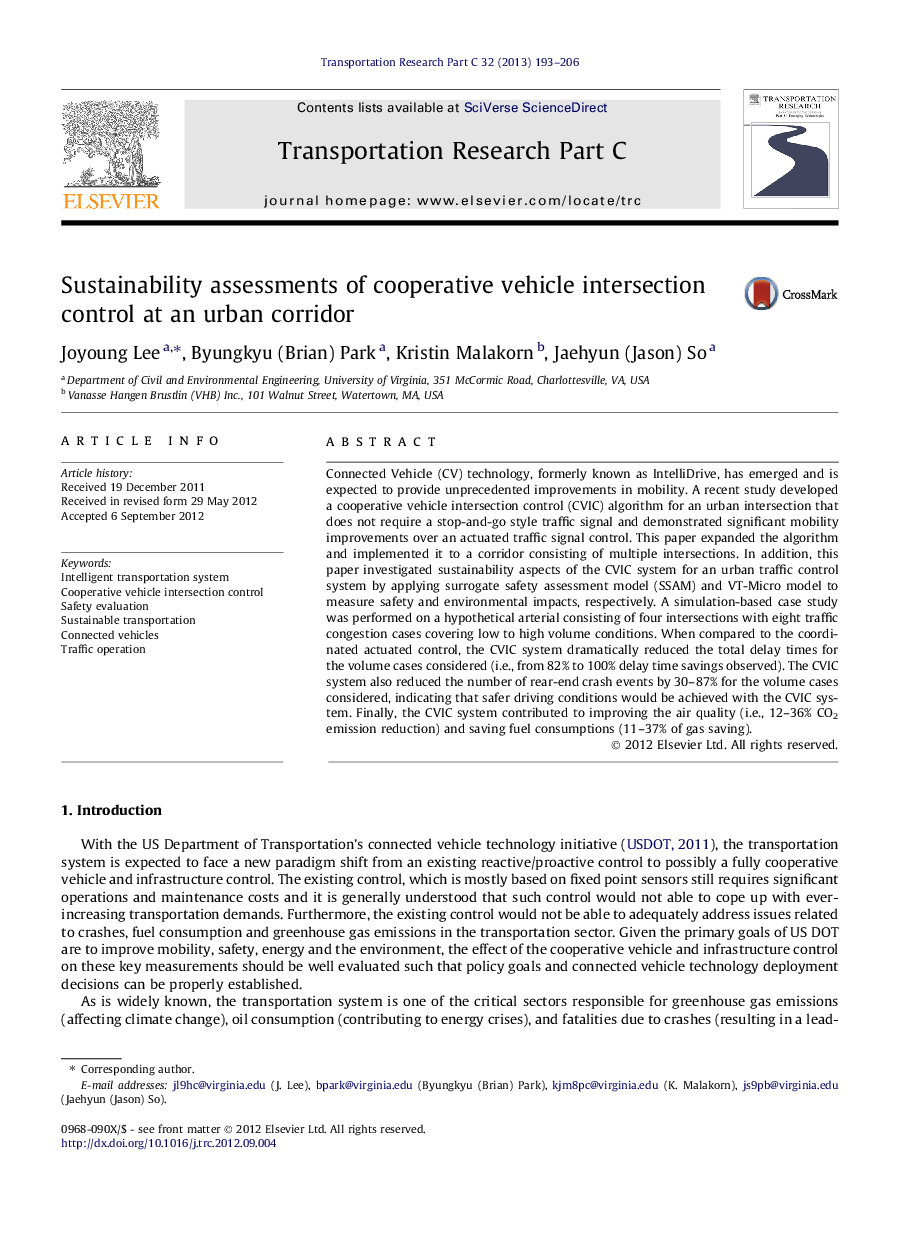| کد مقاله | کد نشریه | سال انتشار | مقاله انگلیسی | نسخه تمام متن |
|---|---|---|---|---|
| 524958 | 868874 | 2013 | 14 صفحه PDF | دانلود رایگان |

Connected Vehicle (CV) technology, formerly known as IntelliDrive, has emerged and is expected to provide unprecedented improvements in mobility. A recent study developed a cooperative vehicle intersection control (CVIC) algorithm for an urban intersection that does not require a stop-and-go style traffic signal and demonstrated significant mobility improvements over an actuated traffic signal control. This paper expanded the algorithm and implemented it to a corridor consisting of multiple intersections. In addition, this paper investigated sustainability aspects of the CVIC system for an urban traffic control system by applying surrogate safety assessment model (SSAM) and VT-Micro model to measure safety and environmental impacts, respectively. A simulation-based case study was performed on a hypothetical arterial consisting of four intersections with eight traffic congestion cases covering low to high volume conditions. When compared to the coordinated actuated control, the CVIC system dramatically reduced the total delay times for the volume cases considered (i.e., from 82% to 100% delay time savings observed). The CVIC system also reduced the number of rear-end crash events by 30–87% for the volume cases considered, indicating that safer driving conditions would be achieved with the CVIC system. Finally, the CVIC system contributed to improving the air quality (i.e., 12–36% CO2 emission reduction) and saving fuel consumptions (11–37% of gas saving).
Highlight
• Compared to actuated control, the cooperative vehicle intersection control system demonstrated.
• 82–100% of delay time reductions.
• 16–20% of total travel time improvements.
• 30–87% of rear-end crash events.
• 36% and 37% of air quality and fuel consumption improvements, respectively.
Journal: Transportation Research Part C: Emerging Technologies - Volume 32, July 2013, Pages 193–206